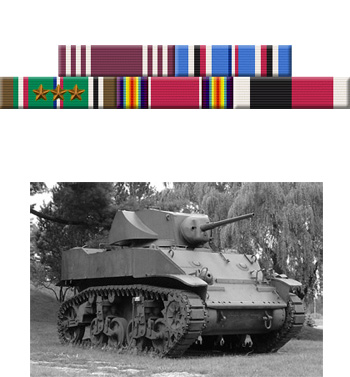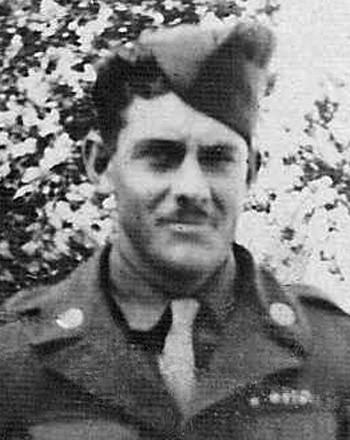
|
Earl L. Cross |
 |
|||
| Rank, Service | ||||
Private First Class E-3, U.S. Army |
||||
| Veteran of: | ||||
|
||||
| Tribute: | ||||
Earl Cross was born on July 7, 1916, in Russellville, Kentucky. After being turned down for enlistment just after Pearl Harbor was attacked in December 1941 (due to Army regulations at the time because he had a wife and son), he was finally able to enlist in the U.S. Army on August 26, 1942, and was trained as a tank driver and gunner at Fort Knox, Kentucky. Cross then went to England and was trained as an infantryman before going to continental Europe and being assigned to Company F, 87th Cavalry Reconnaissance Squadron (Mechanized) of the 7th Armored Division. Company F was comprised of M5A1 Stuart light tanks, and he arrived at the Company only a week before the Battle of the Bulge began. On December 16, 1944, the 7th Armored was ordered south from its positions astride the Holland/German border to Bastogne in Belgium. However, along the way, led by the 87th Cavalry, the orders were changed and the 7th Armored Division was diverted to St. Vith, Belgium, in an attempt to rescue the 106th Infantry Division surrounded on a German ridge called the Schnee Eifel. The 7th Armored charged sixty miles and on the afternoon of the 17th of December, 1944, the first element of the division, led by the first tank of the first platoon of Company F, 87th Cavalry, driven by PFC Earl Cross, entered St. Vith. For nearly six days the 7th Armored Division took the brunt of the attack by two German Panzer Armies. While the Germans went around Bastogne, the defenders of St. Vith disrupted Von Rundstedt's time table and ruined Hitler's plans to capture Antwerp. When increasing enemy pressure and the threat of being surrounded by the enemy grew, the 7th Armored pulled out of St. Vith. The last vehicle to leave was the vehicle that first arrived, the first tank of the first platoon of the 87th Cavalry driven by PFC Earl Cross. The only difference was that the tank's main gun had been caved in by a glancing German tank round. The 87th would survive the Battle of the Bulge and race north to the Baltic Sea, sealing off Denmark from advancing Russian forces. One of the first vehicles to arrive on the Baltic Sea was the first tank of the first platoon of the 87th Cavalry, driven by PFC Cross. After the war ended in Europe, he spent time with the occupation forces before training for the invasion of Japan. The war in the Pacific ended before Cross could be shipped to that theater, and he was honorably discharged from the Army on December 22, 1945. Earl Cross died on Flag Day, June 14, 2002. He considered his service in World War II his finest contribution to the world. |
||||
|
||||

